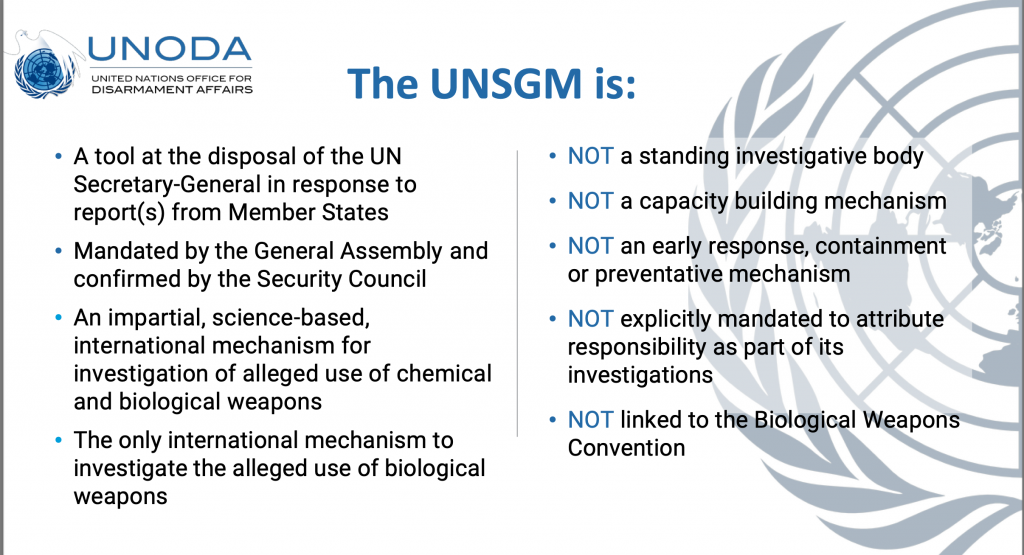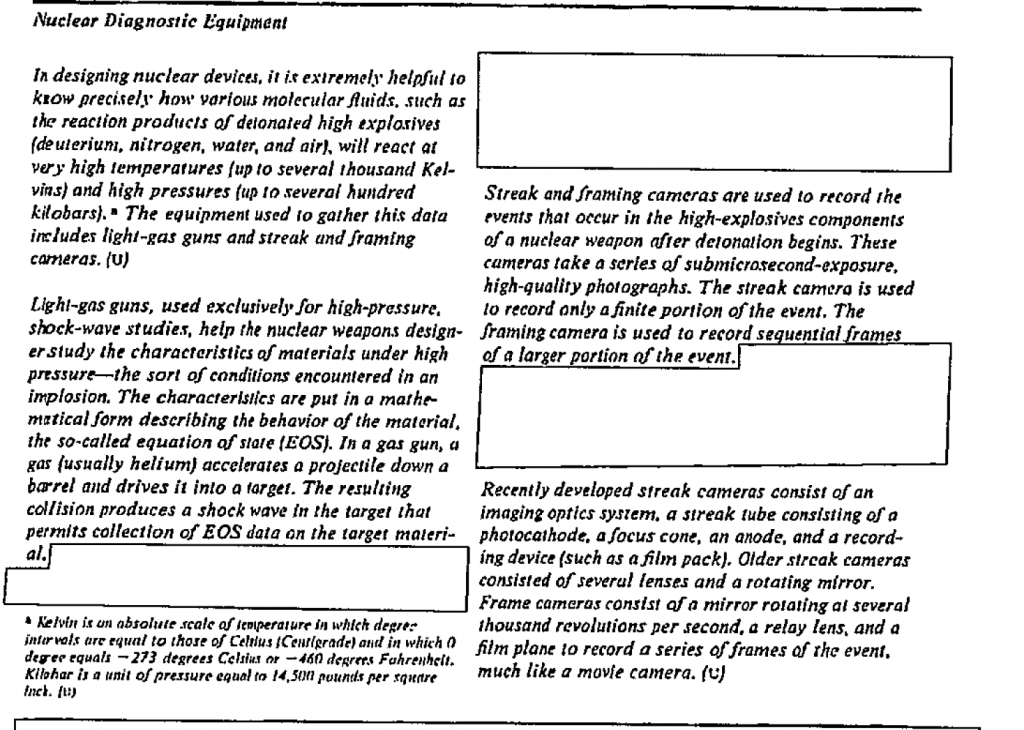Here’s a short presentation about the UN Secretary-General’s Mechanism (UNSGM) for Investigation of Alleged Use of Chemical, Biological and Toxin Weapons


Here’s a short presentation about the UN Secretary-General’s Mechanism (UNSGM) for Investigation of Alleged Use of Chemical, Biological and Toxin Weapons

According to this MOD press release, Defense Minister Raksha Mantri Shri Rajnath Singh told his Russian counterpart Sergei Shoigu that
the nuclear option should not be resorted to by any side as the prospect of the usage of nuclear or radiological weapons goes against the basic tenets of humanity.
A few days back, Iranian Supreme Leader Khamenei explained Iran’s development and acquisition of nuclear technology:
Fundamental achievements in the nuclear industry, the issue of nuclear technology is a long story. There is a lot to be said in this regard, but our time is limited now. We have gained access to fundamental issues in nuclear industry. We are not seeking weapons or bombs or things like that, but this industry itself has many benefits. We were able to gain access [to it].
The first producer of nuclear technology was Germany during Hitler’s time. The Americans then took this technology from them and some other countries were able to take it from the Americans through different kinds of scientific theft. And then those countries gave the technology to other like-minded countries, and so on. So, that is how they have gained access to it.
Not us! Of course, the very first insufficient groundwork that was laid out was from abroad and it was very insignificant. But the actual work that was done was carried out by Iranian elites and they did it with power and they did it with hope
This 2001 paper by Richard Garwin serves as a nice reference for basic nuclear weapons facts. For example,
U.S. nuclear weapons (and perhaps those of
the other four Nuclear Weapon States under the 1970
Non-Proliferation Treaty, NPT) now consist of hollow
plutonium shells surrounded by high explosive. The shell
can be accelerated and then abruptly arrests itself by
symmetry, leading to greater compression than can be
achieved in a solid sphere. Accordingly, the Pu content in
a U.S. nuclear weapon is as little as 4 kg.
India recently tested an SLBM:
INS Arihant carried out a successful launch of a Submarine Launched Ballistic Missile (SLBM) on October 14, 2022. The missile was tested to a predetermined range and impacted the target area in the Bay of Bengal with very high accuracy. All operational and technological parameters of the weapon system have been validated.The successful user training launch of the SLBM by INS Arihant is significant to prove crew competency and validate the SSBN programme, a key element of India’s nuclear deterrence capability. A robust, survivable and assured retaliatory capability is in keeping with India’s policy to have ‘Credible Minimum Deterrence‘ that underpins its ‘No First Use’ commitment.
I’m sure someone’s mentioned it, but XX published this FR notice in 2015 which notes that the End-User Review Committee
determined that the National University of Defense Technology (NUDT), the National Supercomputing Center in Changsha (NSCC-CS), National Supercomputing Center in Guangzhou (NSCC-GZ), and the National Supercomputing Center in Tianjin (NSCC-TJ), all located in the People’s Republic of China, meet the guidelines listed under § 744.11(b): Entities for which there is reasonable cause to believe, based on specific and articulated facts, that an entity has been involved, is involved, or poses a significant risk of being or becoming involved in activities that are contrary to the national security or foreign policy interests of the United States and those acting on behalf of such entities may be added to the Entity List pursuant to this section. Specifically, NUDT has used U.S.-origin multicores, boards, and (co)processors to produce the TianHe-1A and TianHe-2 supercomputers located at the National Supercomputing Centers in Changsha, Guangzhou, and Tianjin. The TianHe-1A and TianHe-2 supercomputers are believed to be used in nuclear explosive activities as described in § 744.2(a) of the EAR.
In this report, titled Report No. 27 (2007–2008) to the Storting Disarmament and Non-proliferation, the Norwegian Foreign Ministry stated that
The future of the 1987 Intermediate-range Nuclear Forces Treaty (INF), which prohibits the US and Russia from possessing ground-launched ballistic and cruise missiles with ranges between 500 and 5500 kilometres, is also uncertain, because Russia has expressed doubt as to whether the treaty still serves the country’s security interests.
This 1988 CIA report has a useful section on nuclear diagnostic equipment:

More from this August document:
A) Status and reduction of nuclear arsenals and forces
1) Reduction of the size of French deterrent forces
(a) In keeping with the principle of strict sufficiency, France maintains its arsenal at the lowest level possible in the light of the strategic context and the foreseeable evolution of the threat. French nuclear forces are currently divided into two complementary components:
• Seaborne component. Four nuclear-powered ballistic missile submarines, based at Île Longue and equipped with M51 intercontinental ballistic missiles, provide continuous at-sea deterrence.
• Airborne component. This comprises Rafale aircraft carrying improved medium-range air-to-surface missiles that could be operated from French soil by the air and space force or, depending on the circumstances, from the Charles de Gaulle aircraft carrier by the navy.
The President of the Republic has decided to renovate these two components, which will allow the permanence, credibility and strict sufficiency of the French nuclear deterrent forces to be maintained.
As stated by the President on 7 February 2020, France has a total of fewer than 300 nuclear warheads. It has no weapons in reserve.